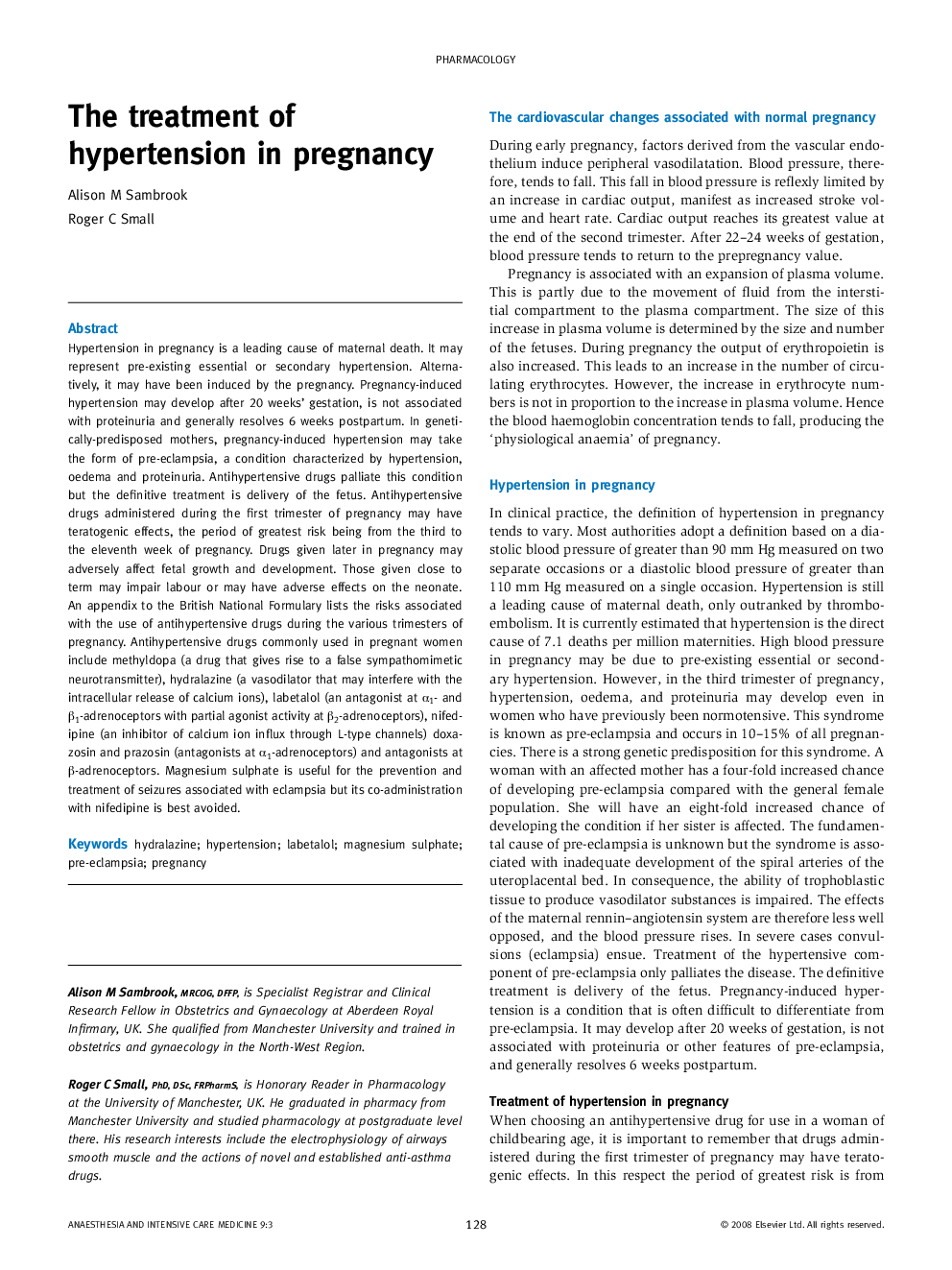| Article ID | Journal | Published Year | Pages | File Type |
|---|---|---|---|---|
| 2743583 | Anaesthesia & Intensive Care Medicine | 2008 | 4 Pages |
Hypertension in pregnancy is a leading cause of maternal death. It may represent pre-existing essential or secondary hypertension. Alternatively, it may have been induced by the pregnancy. Pregnancy-induced hypertension may develop after 20 weeks’ gestation, is not associated with proteinuria and generally resolves 6 weeks postpartum. In genetically-predisposed mothers, pregnancy-induced hypertension may take the form of pre-eclampsia, a condition characterized by hypertension, oedema and proteinuria. Antihypertensive drugs palliate this condition but the definitive treatment is delivery of the fetus. Antihypertensive drugs administered during the first trimester of pregnancy may have teratogenic effects, the period of greatest risk being from the third to the eleventh week of pregnancy. Drugs given later in pregnancy may adversely affect fetal growth and development. Those given close to term may impair labour or may have adverse effects on the neonate. An appendix to the British National Formulary lists the risks associated with the use of antihypertensive drugs during the various trimesters of pregnancy. Antihypertensive drugs commonly used in pregnant women include methyldopa (a drug that gives rise to a false sympathomimetic neurotransmitter), hydralazine (a vasodilator that may interfere with the intracellular release of calcium ions), labetalol (an antagonist at α1- and β1-adrenoceptors with partial agonist activity at β2-adrenoceptors), nifedipine (an inhibitor of calcium ion influx through L-type channels) doxazosin and prazosin (antagonists at α1-adrenoceptors) and antagonists at β-adrenoceptors. Magnesium sulphate is useful for the prevention and treatment of seizures associated with eclampsia but its co-administration with nifedipine is best avoided.
